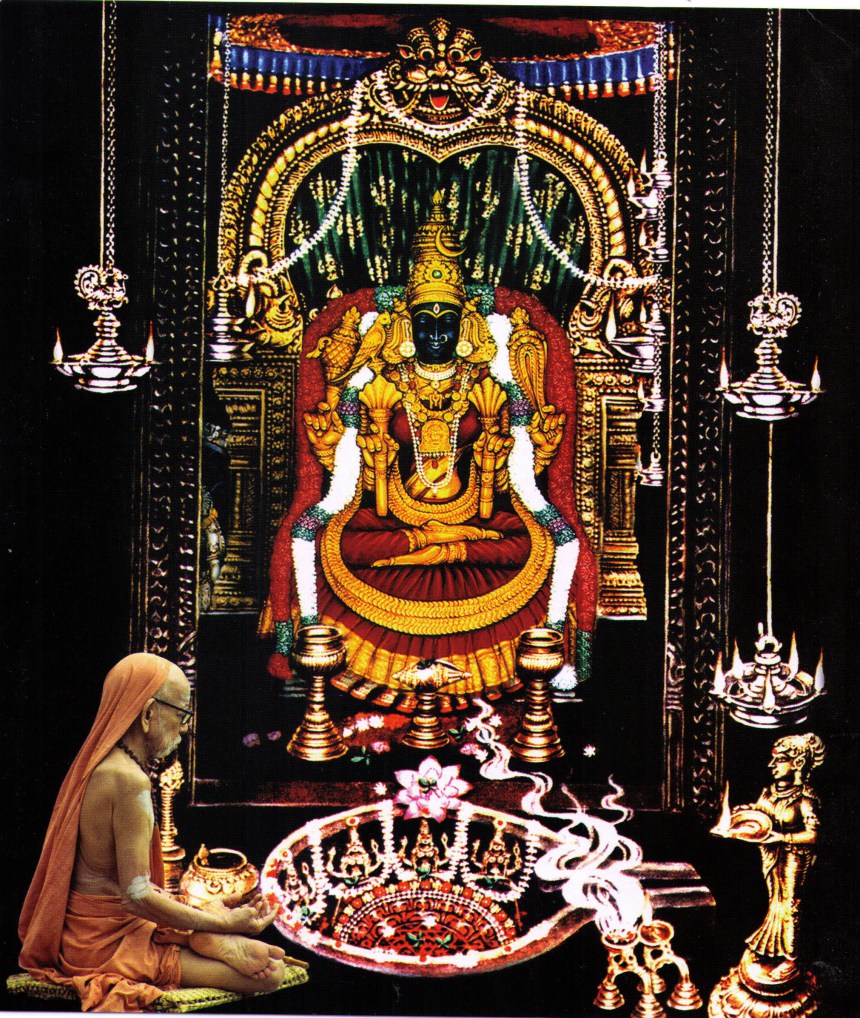We ought to have implicit faith in the Vedas, so too in the statements made in the Tamil Vedas of Saivas and Vaisnavas- the Tevaram and the Divyaprabandham. There are places whose glory has been sung in the Tevaram of the Nayanmars and in the pasurams of the Azhvars. These songs allude to what is said about such places in the Sthala Puranas. That there are such references in these Tamil devotional works, which are 1, 500 years old, is proof of the antiquity of these Puranas.
For instance, take the Perumal of the Srirangam temple (Tamil Nadu). The idol is unique in the sense that it faces south. There is an explanation for this in the Sthala Purana pertaining to the temple. When Vibhisana was returning to Lanka after attending the coronation of Sri Ramacandra, Rama gave him the idol of Ranganatha that he himself had been worshipping. On his way the idol somehow got installed on the island skirted by the two arms of the Kaveri. Vibhisana was sad that he could not take it with him to his capital Lankapuri. So, out of compassion for him, Sri Ranganatha lay facing south. This incident is described in detail in the Sthala Purana of Srirangam. It is also mentioned in the songs of the Azhvars.
If the reason for Vishnu facing south in Srirangam was known during the time of the Azhvars, the Sthala Purana of that place must surely predate the work of these Vaisnava saint-poets.
The linga in the Ekamranatha temple in Kancipuram was shaped by Amba herself. At the time she was worshipping it the Lord created a flood, but she kept embracing the linga and it was thus saved from being carried away in the flood. The Lord then appeared from the linga. This Sthala Purana episode is told in the Tevaram also. Sundaramurtisvamin's poems sing the glory of Amba performing puja here.
In Jambukesvaram (Tiruvanaikka), near Srirangam, a great sage called Jambu was transformed into a jambu tree. Siva enshrined himself under it in his linga form. There a spider wove a conopy of web over the linga and worshipped the Lord. An elephant destroyed this canopy and performed abhiseka to the linga. The spider, naturally enraged, crept into the elephant's trunk, ascended up and bore into its head. The animal then dashed against the jambu tree and it was killed along with the spider. The spider was reborn as KoccenkotCola who built the Jambukesvaram temple. This story occurs in the Sthala Purana- and it is referred to in the Tevaram also. In the sanctum sanctorum of the temple, the Kaveri wells up all the time. This wonderful phenomenon is mentioned in the Tevaram of Appar and in the Patttupattu.
At midday, in Tirukkazhukunram, two eagles descend on the hill and receive sweet rice offered by the temple priest. After consuming the rice the birds fly away. Some people have doubts about the antiquity of this phenomenon. From the time of the Tevaram itself the place is known as (Tiru)kazhukkunram. What better evidence is needed?
In Tiruvidaimarudur (in Tanjavurdistrict) bathing on the occasion of Taippusam is specially auspicious according to the Ksetra-mahatmyam. Appar and Sambandhar have spoken about the festival in their songs dating back to 1, 500 years ago.
Srirangam, Jambukesvaram, Kancipuram, Tirukkazhukunram and Tiruvidaimarudur are great holy places. So it may be argued, there is nothing remarkable about their being mentioned in the old Tamil texts. But it is noteworthy that puranic stories associated even with smaller places are referred to in old Tamil religious works.
The Sthala Puranas have it that in certain places that are not so famous sages and celestials appeared as bees to worship the deities there. Even today we see huge honeycombs before the sanctum itself. One such place is Nannilam. It is also called "Madhuvanam". Sittambur, near Tirutturaippundi, is called Tiruccirremam in the Tevaram. Here too there is a honeycomb before the sanctum. The story goes that siddhas come here as honeybees to worship the Lord. Puja is performed to the honeycomb also everyday. Similarly, there is a honeycomb in the Vaisnava temple of Tirukkannamangai. There are references to such places in both the Tevaram and the Divyaprabandham.
The antiquity and authenticity of the Sthala Puranas are supported by such stories (stories relating even to minor incidents associated with not so big places) occuring in the Tevaram, Tiruvacakam and the Nalayira-Divyaprabandham.

